This website stores cookies on your computer. These cookies are used to collect information about how you interact with our website and allow us to remember you. We use this information in order to improve and customize your browsing experience and for analytics and metrics about our visitors both on this website and other media. To find out more about the cookies we use,
see our Privacy Policy.
Classroom Technology
Technology Stimulates Learning in the Classroom
Classroom technology plays a crucial role in helping educators meet today’s educational challenges and helps prepare students for tomorrow. A classroom is no longer a blackboard and a set of fixed desks. Students are empowered with Chromebooks and tablets, interact with gamified learning software, communicate through collaboration platforms, and engage with teacher presentations on interactive whiteboards. Moveable furniture allows classroom design itself to shift to better meet the needs of the day’s lesson plan, while offering students more flexibility and better ergonomics. Whether classes are online or in-person, technology has transformed the way we teach and learn. Students can take a VR tour in a geography class, complete STEM experiments with real-time partners a world apart, or ask questions of a world-class expert during a virtual presentation. Solutions also extend to provide educators with greater professional development opportunities, reduce administrative duties, and streamline routine student scoring so they have more time with students. And for school districts, investments in infrastructure and cybersecurity provide the reliable foundation for the most exciting classroom technology that’s currently available.

Featured Classroom Technology Products
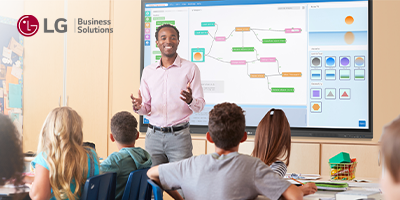
Revolutionize Your Classroom
Traditional teaching methods are no longer enough. LG CreateBoard™ offers advanced presentation and collaboration tools designed to boost student engagement and empower educators.What’s Next in Classroom Technology for 2024

The adoption of classroom technology has seen a dramatic increase over the past few years. This shift, initially sparked by the necessity of remote learning during the pandemic, has led to an enduring integration of digital tools in education.
As a result, investments in educational technology have surged. The EdTech market size was valued at $254.80 billion USD in 2021, but is now expected to reach $605.40 billion USD by 2027. The use of digital devices in schools has also increased by 99% since 2020. Meanwhile, 51% of school teachers, principals, and district leaders say they are invigorated by technology.
This growing interest and investment in technology has paved the way for the deployment of new strategies and innovative ways to employ technology in the classroom. Here are the top five classroom technology trends that are leading the charge toward more adaptive and inclusive educational practices.
1. The Strategic Use of Technology Enhances Learning Outcomes
The strategic use of technology in education has proven to be a critical factor in enhancing learning outcomes for students across diverse backgrounds. According to recent data, 73% of K-12 educators affirm that investments in technology over the past five years have significantly improved student outcomes, validating the push towards a more digitized approach in education.In the classroom, technologies such as virtual labs, digital textbooks, and interactive simulations play an important role. These tools are not just supplementary; they create immersive learning environments that engage students in a manner traditional methods might not. For instance, virtual labs allow students to conduct experiments in a controlled, virtual space, eliminating the limitations of physical lab resources while providing the opportunity to repeat experiments multiple times. Digital textbooks offer interactive content like videos and assessments, making learning more dynamic and accessible. Furthermore, interactive simulations involve students in active learning through real-time problem-solving and decision-making scenarios, which are crucial for understanding complex concepts across subjects.
2. Improve Teacher Retention Through Technology
The adoption of technology in educational settings is significantly enhancing teacher retention. Supported by professional development platforms, collaborative tools, and workload management systems, these technologies boost job satisfaction and tackle the persistent issue of teacher turnover.Technological platforms also foster a connected and supportive work environment by facilitating collegial support and transparent communication, creating a community atmosphere that is essential for teacher engagement. These tools not only support daily teaching activities but also use data to track and address factors leading to teacher attrition, allowing for proactive retention strategies.
Moreover, the integration of generative AI is transforming administrative and instructional tasks for teachers. By automating routine duties and creating tailored lesson plans, AI technologies free teachers to focus more on pedagogy and less on paperwork, thereby boosting teaching efficacy and job satisfaction.
3. Empowering student voice and inclusion
Technology is reshaping education by empowering student voices and fostering inclusion. New education technologies are enabling more personalized learning paths for students, allowing them to set their own goals and learn at their own pace, while also enhancing collaboration through online discussions, peer feedback, and group projects.To empower student voice, schools are also implementing a range of technologies that facilitate interactive and participatory learning environments. Tools such as interactive whiteboards and classroom response systems allow students to actively engage during lessons, providing immediate feedback and encouraging diverse viewpoints. Digital forums and social media platforms are also prominent, enabling students to participate in broader discussions and collaborate on projects in real time. These technologies are crucial in creating classrooms that value and amplify student input, promoting a culture of inclusivity and active learning.
4. Adaptive and Personalized Learning Technologies
Adaptive and personalized learning technologies are reshaping K-12 education by customizing instruction to meet individual student needs. These technologies dynamically adjust educational content based on learning styles and progress, helping to close achievement gaps and enhance engagement. Highlighting their growing popularity, the global adaptive learning market, valued at $3.46 billion in 2022, is projected to reach $15.4 billion by 2030.Adaptive platforms like DreamBox Learning and Smart Sparrow use algorithms to tailor math and science curriculums in real-time. Additionally, learning management systems (LMS) such as Canvas and Blackboard incorporate adaptive features that personalize the learning experience based on performance metrics.
Technologies like AI, particularly tools such as ChatGPT, are pivotal in advancing personalized and adaptive learning within classrooms. For instance, ChatGPT can personalize interaction by providing customized responses and feedback based on student inputs, supporting diverse educational tasks like problem solving and essay writing. This AI-driven model offers immediate feedback, enhancing understanding and engagement by adapting to individual learning needs and styles.
5. AI in the Classroom
AI is increasingly becoming a staple in educational settings, enhancing both teaching and learning experiences. In the classroom, AI supports various administrative tasks, such as scheduling and attendance tracking, which alleviates some of the logistical burdens on teachers, allowing them to devote more time to instructional interactions with students. Additionally, AI technologies facilitate improved communication between parents and teachers through AI-powered chatbots and predictive analytics, which can proactively address concerns and streamline updates regarding student progress.For students with exceptionalities, AI opens new avenues for inclusion. Tools like speech-to-text and text-to-speech software, along with AI-driven educational games, are helping to create more accessible learning opportunities. Furthermore, AI-powered tutoring systems can tailor instructions and provide personalized support to ensure students understand concepts thoroughly before advancing, which is essential for students who need extra help.
As AI's role in society grows, teaching AI literacy has also become necessary. Students need to use AI tools to understand their underlying mechanisms. This includes developing skills in data and algorithmic literacy to prepare them for future careers where AI will likely be ubiquitous. By integrating AI into the curriculum, schools are preparing students to navigate and succeed in an increasingly digital world.
Preparing Students for a Technology-driven World
As technology continues to evolve and become increasingly central to every aspect of our lives, its integration into educational settings is necessary and invaluable. By embracing these advancements, schools are not only improving educational outcomes but are also preparing students for a future where digital fluency is essential.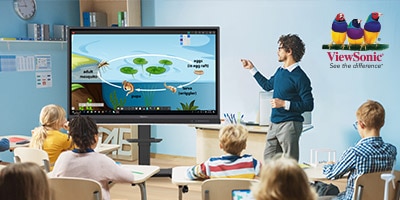
Android™ EDLA Certified Displays
ViewSonic® ViewBoard® IFP52-2ED Series allow teachers to easily and securely access their Google accountsStudent Learning
Technology Enhances Student Learning
Digital-native students have access to the devices they need to stay connected, engaged, and excited about learning. Laptops and tablets help break down the digital divide while providing students with supportive and personalized learning that meets their needs. With expanded digital tools such as collaboration platforms, virtual reality, and gamified learning, students are taken beyond the four walls of the classroom to learn in the context that’s right for them. Trends for designing student-centered classrooms include digital displays, interactive whiteboards and projectors, and movable furniture that transforms static classrooms into spaces where learners are eager to spend time. Today’s emerging classroom technology enhances student learning in a variety of ways, sparking creativity, supporting growth, and helping students thrive throughout K–12 and beyond.

Enabling Student Success
Apple and Higher Education
Today’s higher education leaders recognize the importance of providing equitable access to the tools and resources that are critical to enabling this success for every student. This has become even more important—yet even more challenging—with the rise of hybrid and online learning environments.
Against this backdrop, many higher education leaders are developing strategic initiatives centered on providing Apple products to all students and faculty to ensure equitable access to cutting-edge tools that support a holistic approach to student success. This document is intended for higher education leaders who are interested in exploring how Apple products can help them create amazing experiences focused on student success in a hybrid learning environment.
How the Right Technology Can Motivate Students
An Essential Student Learning Resource
One of the biggest questions educators, administrators, and parents face is: How do we really get students invested in learning? What will it take to ignite their passion, help them explore their unique abilities and skills, and create the foundation for a lifelong habit of learning? In this essential resource, take a deep dive into the latest technologies and how they’re helping today’s students stay focused on learning.
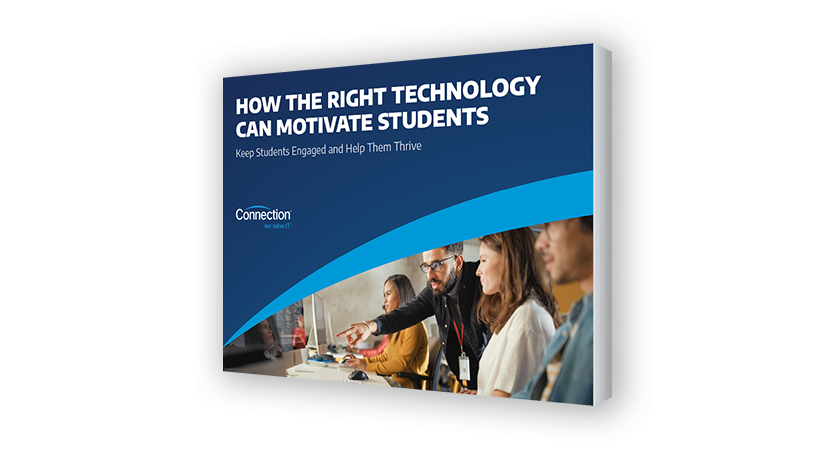
Educators’ Tools
Technology Empowers Educators
Educators are being asked to adapt to a wide range of learning environments. Whether teaching online, in hybrid settings, or in the classroom, technology empowers educators to support the needs of students. From professional development opportunities to technologies that can automate assessment scoring, today’s new solutions free up time and expand educators’ knowledge. With the right technology and support, teachers can spend less time on administrative work and more time where it counts the most—engaging with and inspiring students for classroom success.

Professional Development for Educators
Bringing teachers and students together through modern and effective technology
As remote teaching and learning continue to become the mainstays of the modern education landscape, technology is evolving quickly to meet the demands of a socially distanced world. As a result, there has never been a greater need to support teachers with improving their own skills—and ultimately student outcomes.
Connection’s professional development services assist teachers with integrating appropriate and meaningful instructional technology tools for effective teaching and learning.
Microsoft in Education
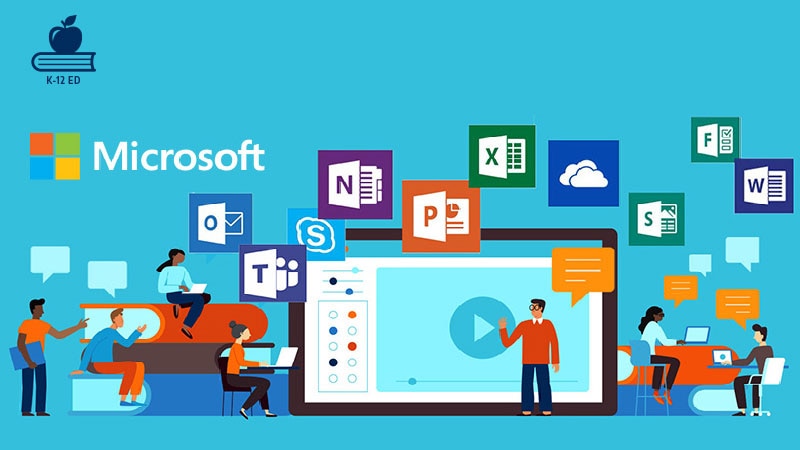
A Full-Circle Connection Customer Success Story with Microsoft in Education
When the pandemic hit in March of 2020, educators were faced with huge challenges while transitioning to virtual learning. At the time, Cindy Daniels—a former Principal turned Professional Learning Consultant and certified MIE at Connection—had been working with and training K–12 teachers. She quickly transitioned her own approach, and began virtually training educators on how they could use Microsoft 365 to better reach students and organize their classes and content.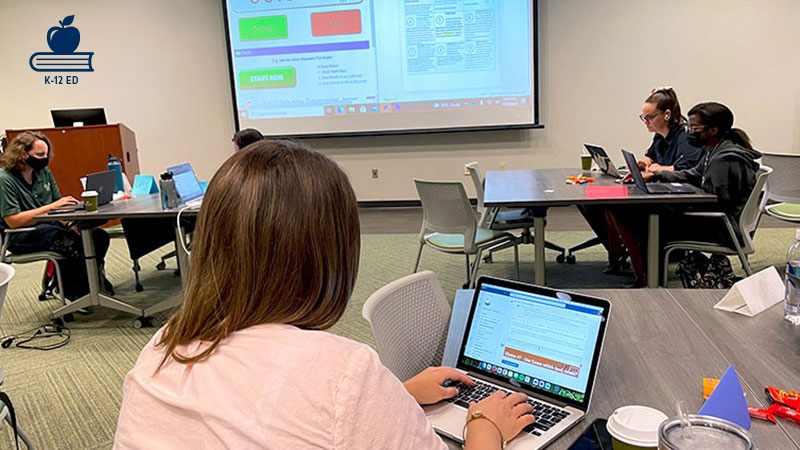
A Connection Customer Success Story with Microsoft in Education
Rachel Hatten, Director of Professional Development at the David C. Anchin Center for the Advancement of Teaching, is a big believer in the “tinkering mentality” when exploring tech tools, particularly when it comes to teaching.“The more we can get our pre-service teachers engaged in that mentality, the more willing they are to let students take risks and try things out. It is okay to use a tool you are not fully versed in and let the kids teach you! They will explore. They will become the experts.”
Classroom Technology Resources
Technology Is Transforming the Classroom
Emerging technologies are transforming today’s classrooms and reshaping how students learn, interact, and prepare for future careers and other academic challenges. Take a closer look at the latest research and how technology is shaping innovative classrooms.
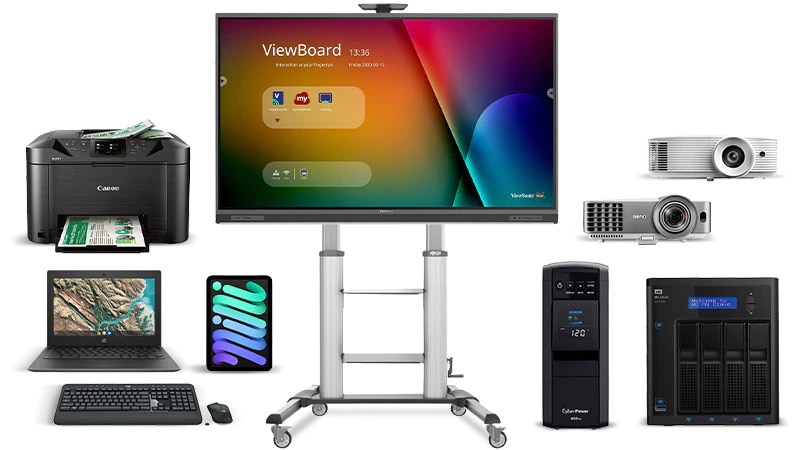
Education Tech
Stimulate Learning with the Right Technology
Education tech—computers and tablets, interactive displays and projectors, network infrastructure, software solutions, and more—are essential for today’s educational institutions. The right technology can:
- Cut costs
- Help administrators
- Promote achievement
- Stimulate learning
- And more!
Classroom Technology Products
Was $316.00
Now
$235.56
Was $2,399.00
Now
$1,833.95
Was $5,299.00
Now
$3,037.95
Was $7,999.00
Now
$4,138.95
Was $1,099.99
Now
$991.51
Batch Add Products by Item #
14



























